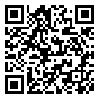BibTeX | RIS | EndNote | Medlars | ProCite | Reference Manager | RefWorks
Send citation to:
URL: http://jstnar.iut.ac.ir/article-1-130-en.html
Four hundred isolates of Ascochyta rabiei (Pass.) Lab. collected from different parts of the country, such as Zarivar Marivan Lake in Kordestan Province Shabestar and Khosroshahr in Eastern Azarbaigan Province Serow, Bokan and Shahindeg in Western Azarbaigan Province Mashhad and Ilam were used in this experiment.
These isolates showed little differences in their cultural and morphological characters and pathogenic behaviors. They were categorized into 17 groups on the basis of collection regions and, based on cultural characteristics, were then reduced to 11 groups. Isolate number 16 from Mashhad showed the highest growth rate while isolate number 1 from Kordestan had the lowest growth rate.
One isolate was chosen as a representative for each group. Pathogenicity of representative isolates from each of the 11 groups were tested. Reaction type of all isolates was studied on differential hosts and one local chickpea line Jam was examined, using Reddy and Nene (1979) method. Races No. 4 and 6 were identified as the two physiologic races.
| Rights and permissions | |
 |
This work is licensed under a Creative Commons Attribution-NonCommercial 4.0 International License. |





